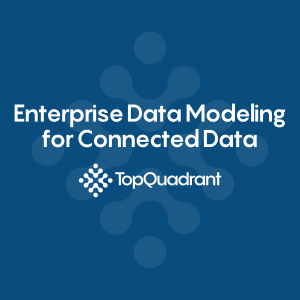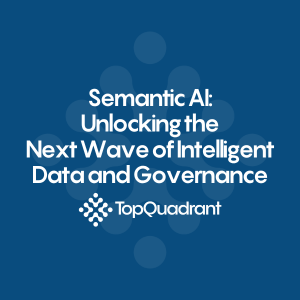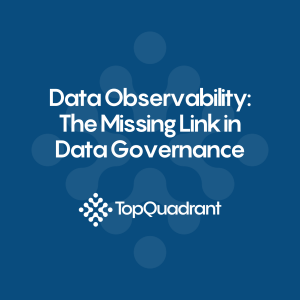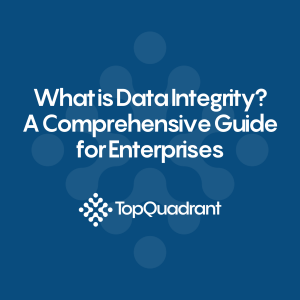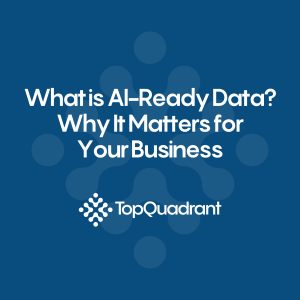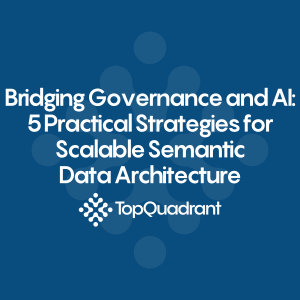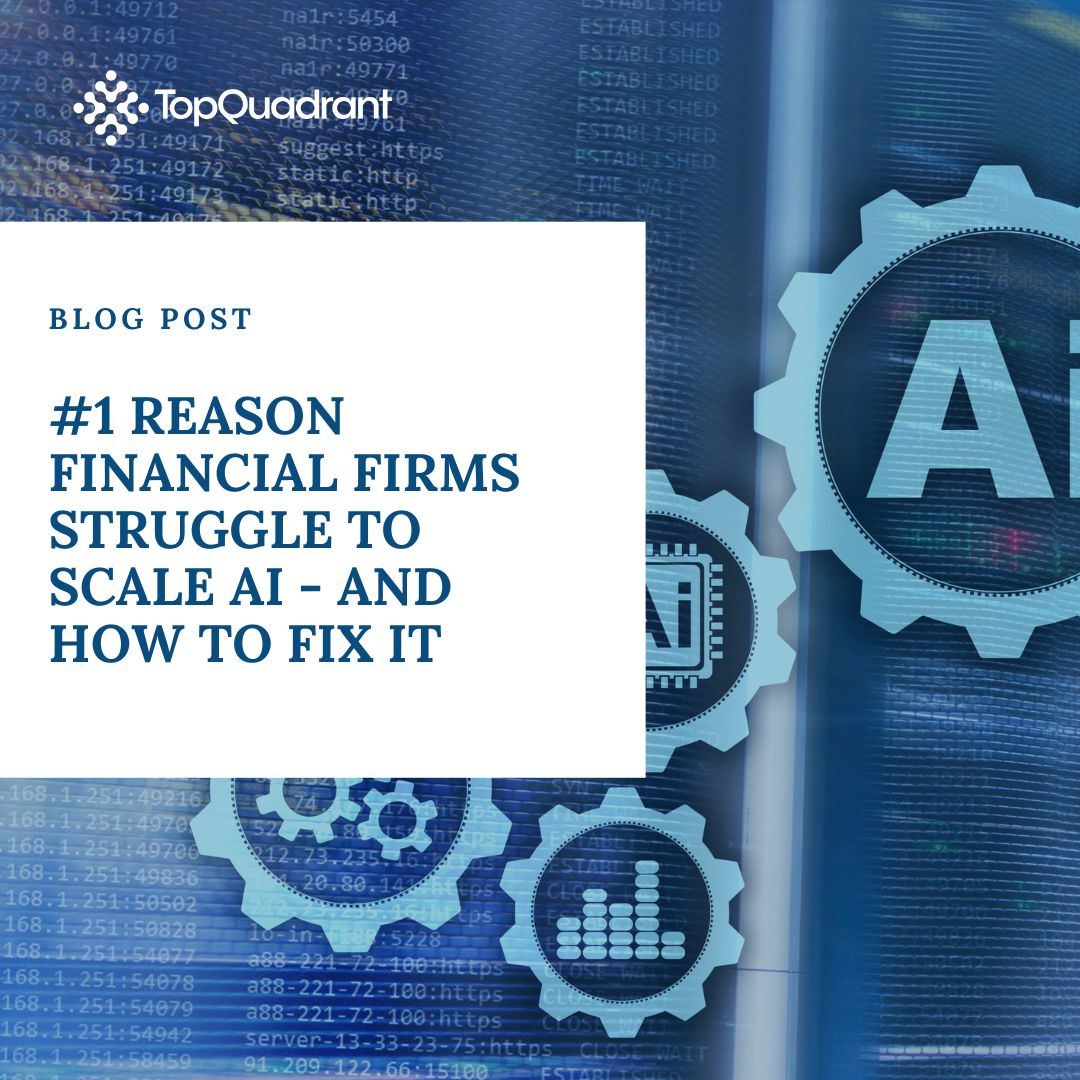Blog | Semantic Modeling for AI: Building Trustworthy and Explainable Systems
Improve governance, integration, and AI explainability by structuring enterprise knowledge with semantic modeling standards like RDF, SHACL, and OWL.
Data is everywhere, but without structure, it quickly turns into noise. Semantic modeling transforms scattered, siloed data into connected knowledge that machines and people can both understand. By defining concepts, relationships, and rules, semantic models power knowledge graphs, improve enterprise data governance (EDG), and prepare organizations for the future of AI and explainable decision-making.
What Is Semantic Modeling?
At its core, semantic modeling is about giving data meaning. Unlike traditional relational data models that focus on tables and columns, a semantic model represents entities (like “Customer” or “Product”), their attributes, and the relationships between them. This allows both humans and machines to interpret and reason over data consistently.
Why It Matters for Enterprises:
- Clarity: Define data concepts and rules with precision.
- Integration: Connect siloed data sources across the enterprise.
- Explainability: Support AI systems that need traceable, interpretable knowledge.
- Compliance: Align with regulatory frameworks through explicit, auditable rules.
How Do RDF, SHACL, and OWL Enable Semantic Modeling?
Semantic modeling is built on W3C standards that ensure data is interoperable across systems and industries:
- RDF (Resource Description Framework): The backbone of semantic models, RDF represents facts as subject–predicate–object triples, making relationships explicit.
- OWL (Web Ontology Language): Adds rich semantics for describing hierarchies, rules, and constraints within ontologies.
- SHACL (Shapes Constraint Language): Validates RDF data against business rules, ensuring quality and compliance.
Together, these standards make semantic models flexible, extensible, and enterprise-ready.
How Do SPARQL and GraphQL Unlock Access to Semantic Models?
Once data is semantically modeled, enterprises need efficient ways to query and use it.
- SPARQL: The W3C standard query language for RDF, enabling powerful graph queries across connected datasets.
- GraphQL: Increasingly used to expose semantic models through developer-friendly APIs, making data more accessible for applications.
Both approaches allow organizations to tap into knowledge graphs, fuel AI agents, and provide end users with real-time insights.
Where Does SKOS Fit in? Controlled Vocabularies and Taxonomies
Not all data management challenges are about complex relationships. Sometimes, enterprises need to standardize vocabularies. SKOS (Simple Knowledge Organization System) provides a framework for creating and managing taxonomies, thesauri, and controlled vocabularies.
This is critical for:
- Metadata management: Consistently tagging and classifying data.
- Digital asset management taxonomy: Organizing media and documents.
- Regulatory alignment: Ensuring everyone uses the same terms for compliance-critical concepts.
How Does Semantic Modeling Enable AI Readiness?
AI doesn’t just need data—it needs structured, contextualized knowledge. Without context, machine learning systems risk producing results that are inaccurate, opaque, or biased. Semantic modeling bridges this gap by turning data into meaning, creating the foundation for trustworthy and explainable AI systems.
Here’s how semantic modeling enables AI readiness:
- Contextual Data Integration: Semantic models unify data across systems by mapping relationships between concepts. For example, a customer in CRM and a policyholder in an insurance database can be linked as the same entity. This contextualization ensures AI doesn’t treat related data as separate, improving accuracy.
- Explainable Reasoning Paths: Because semantic models explicitly define rules and relationships (using OWL and SHACL), every AI decision can be traced back to its knowledge source. This supports explainability, a must-have for regulators and stakeholders.
- Bias Detection and Mitigation: Constraints built into ontologies and SHACL shapes help identify when data is incomplete, inconsistent, or skewed. This reduces bias at the data preparation stage—before it impacts AI outcomes.
- Reusable Knowledge Graphs: Knowledge graphs built on semantic models serve as reusable training and reasoning layers for AI systems, accelerating deployment of new applications without rebuilding from scratch.
- Compliance by Design: With semantic models, compliance rules (e.g., GDPR, HIPAA, or Basel III) can be encoded directly into the data framework. This ensures AI applications automatically align with regulatory requirements.
In short, semantic modeling ensures AI isn’t just “learning from data,” but learning from structured, meaningful, and trustworthy knowledge.
Semantic Modeling vs. Traditional Data Models
Traditional relational data models have been the backbone of enterprise IT for decades. They work well for transactional systems like banking applications, ERP, or point-of-sale software, where rigid structure and speed are critical. But for today’s AI-driven, data-integrated enterprises, their limitations are clear.
Where Relational Models Fall Short:
- Rigid Schemas: Adding a new business rule or integrating new data requires schema redesign and ETL updates.
- Siloed Data: Each database models its own world, joining data across silos is expensive and brittle.
- Limited Semantics: Relationships are implicit and often hidden in application code, making them hard to interpret outside the system.
Why Semantic Models Excel:
- Flexible Ontology Modeling: With RDF and OWL, new concepts and relationships can be added without breaking existing structures.
- Cross-Domain Integration: Semantic models act as a universal data fabric, linking enterprise data sources and external datasets seamlessly.
- Machine Interpretability: Explicit semantics mean AI agents and reasoning engines can understand and explain relationships directly.
- Scalable Governance: With SHACL validation and enterprise metadata management, semantic models enforce rules at scale, ensuring both data quality and compliance.
In other words, traditional models are optimized for transactions, while semantic models are optimized for meaning, integration, and reasoning, making them the natural choice for AI, governance, and enterprise-scale knowledge management.
How Does TopBraid EDG Support Semantic Modeling at Scale?
TopQuadrant’s TopBraid EDG platform provides a robust environment for creating, managing, and deploying semantic models across the enterprise. With built-in support for RDF, OWL, SHACL, SKOS, and SPARQL, EDG enables organizations to:
- Build and manage enterprise ontologies and taxonomies.
- Enforce metadata management and governance policies.
- Support AI agents with explainable, semantically modeled data.
- Expose models via GraphQL APIs for application developers.
- Scale compliance and active metadata management across domains.
What’s the Bottom Line on Semantic Modeling?
Semantic modeling is no longer just an academic exercise—it’s the foundation of enterprise data governance, AI readiness, and trustworthy decision-making. By adopting standards like RDF, OWL, and SHACL, and leveraging platforms like TopBraid EDG, organizations can transform data chaos into clarity, compliance, and competitive advantage.
Explore TopBraid EDG to see how semantic modeling can power your enterprise knowledge strategy.
-
Data Governance65
-
Vocabulary Management9
-
Knowledge Graphs42
-
Ontologies15
-
Data Fabric8
-
Metadata Management17
-
Business Glossaries6
-
Semantic File System9
-
Reference Data Management7
-
Uncategorized2
-
Data Catalogs15
-
Datasets11
-
Taxonomies4
-
News5
-
Policy and Compliance5
-
Life Sciences6
-
Automated Operations6
-
Financial Services9
-
AI Readiness22
-
Podcasts1
